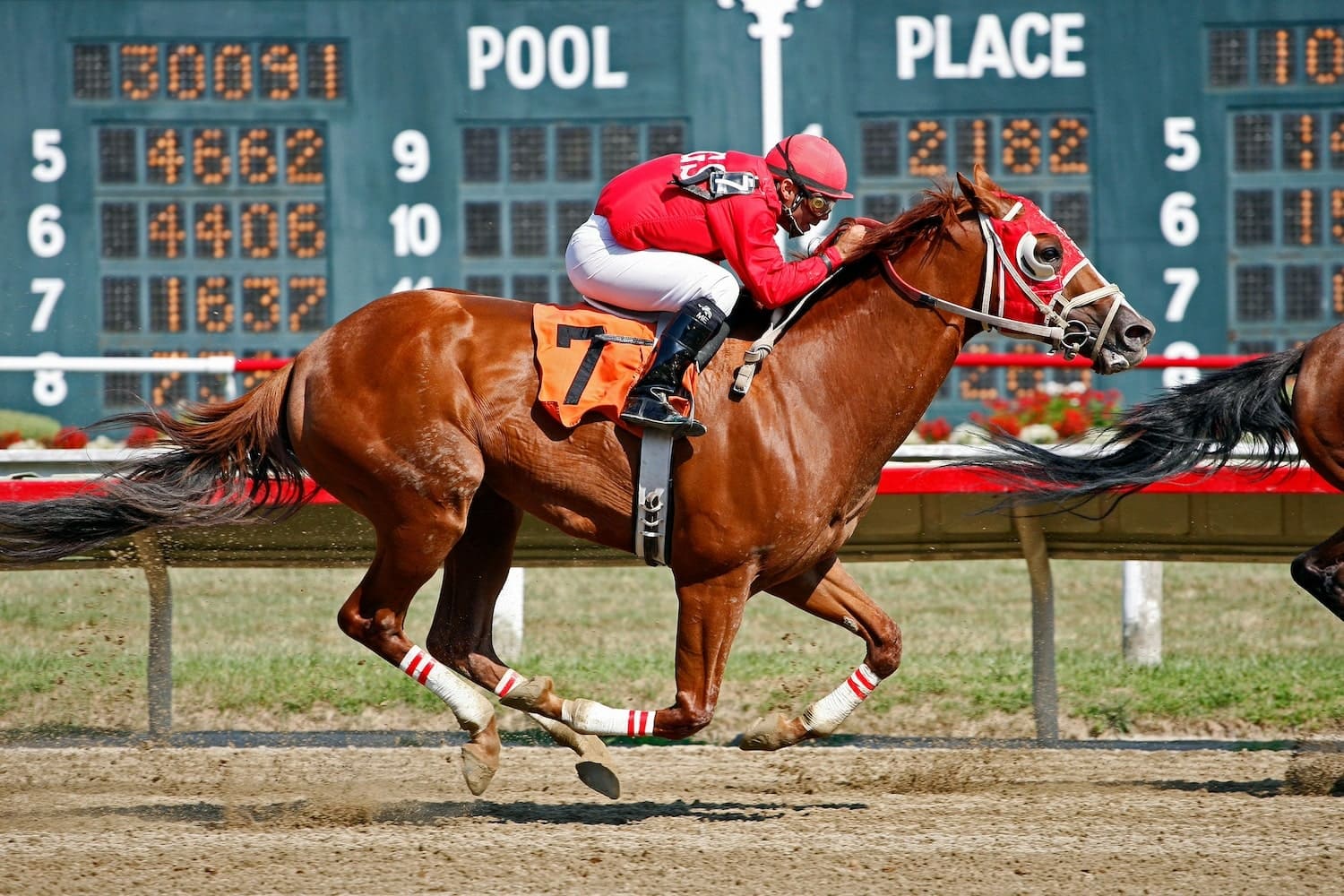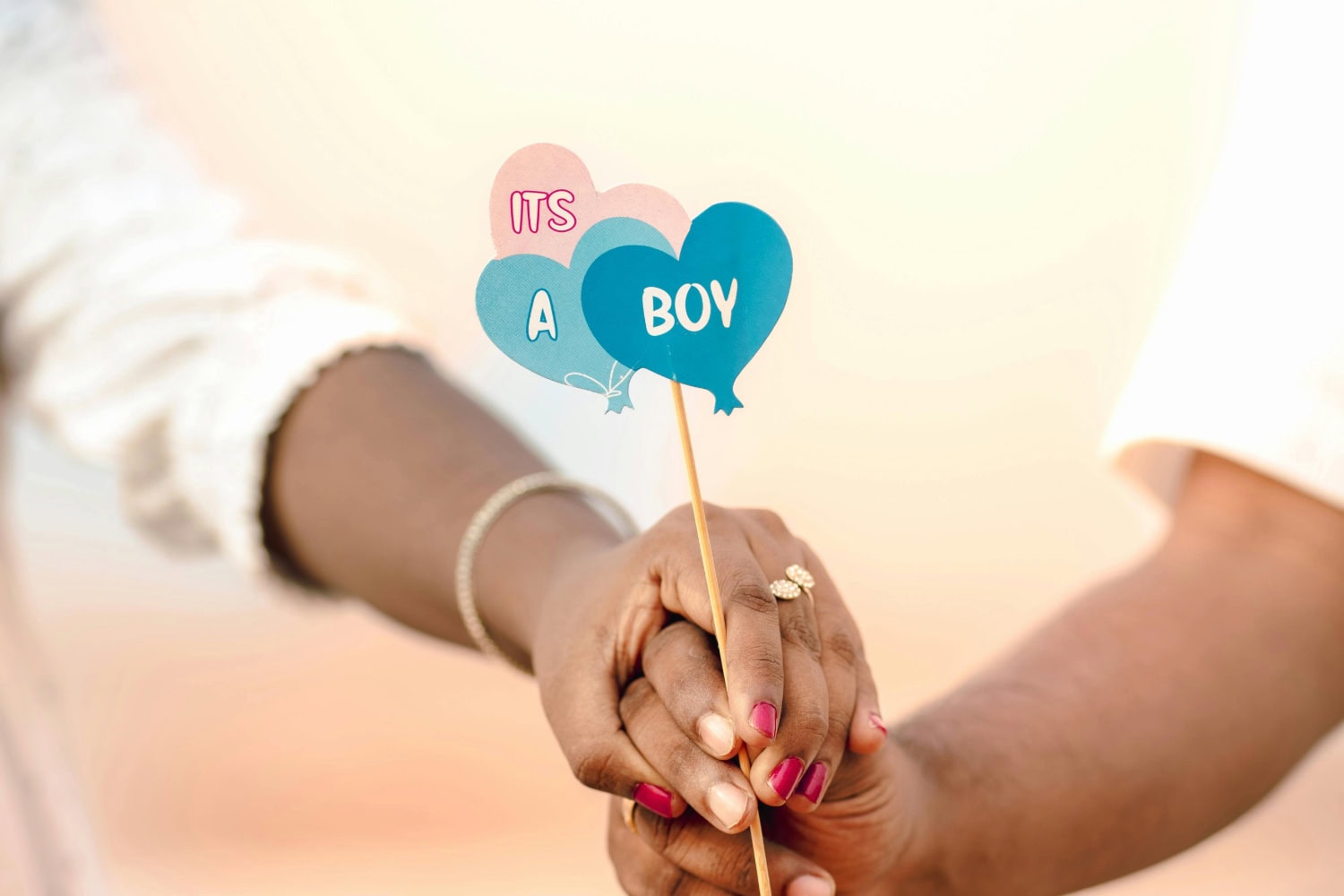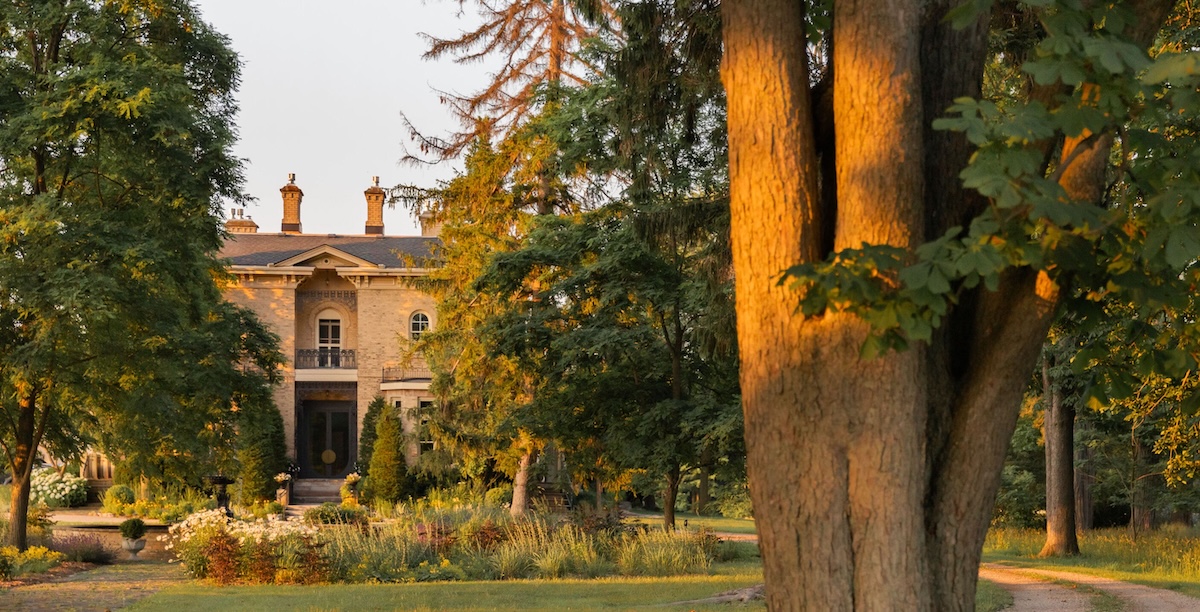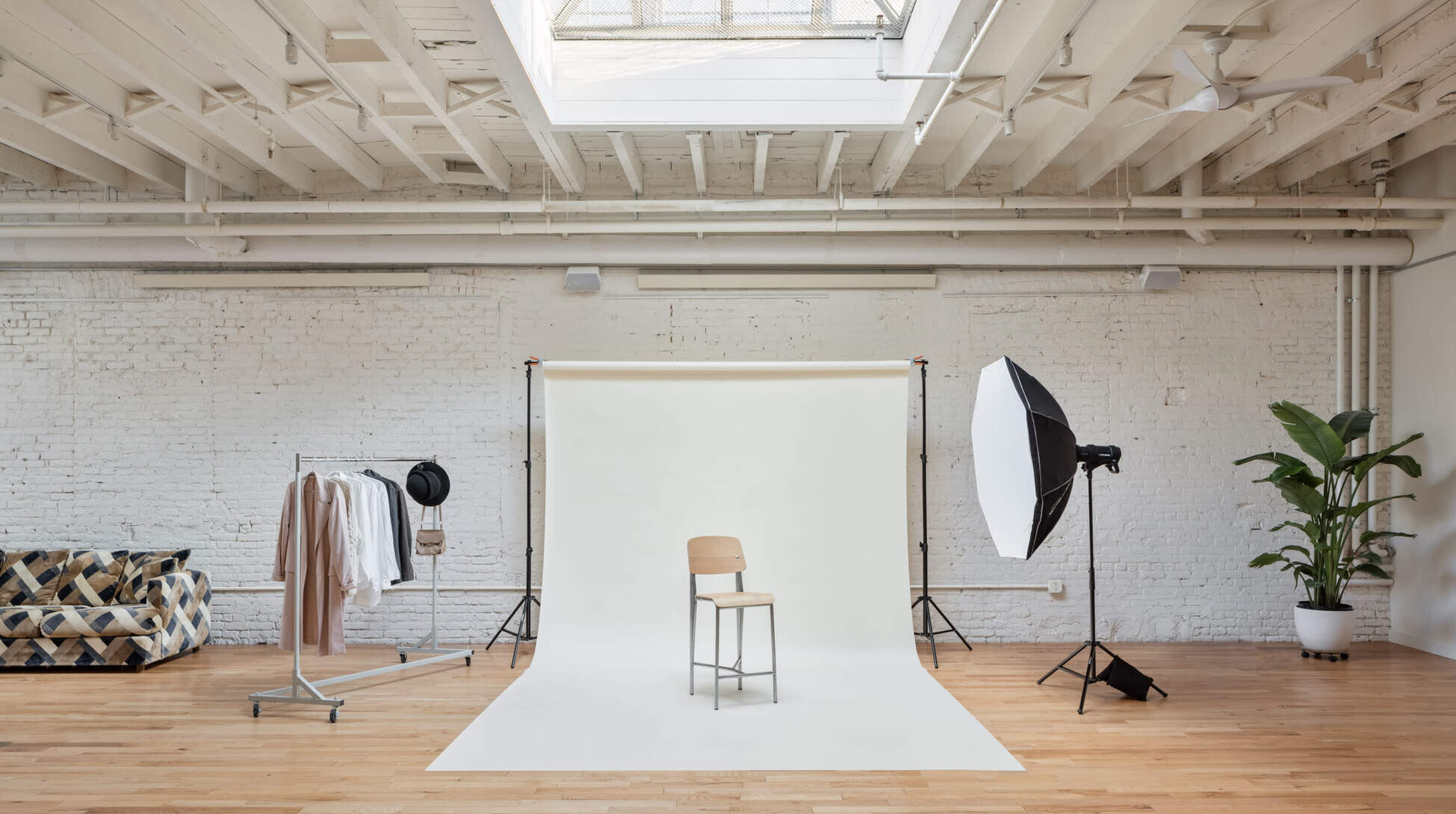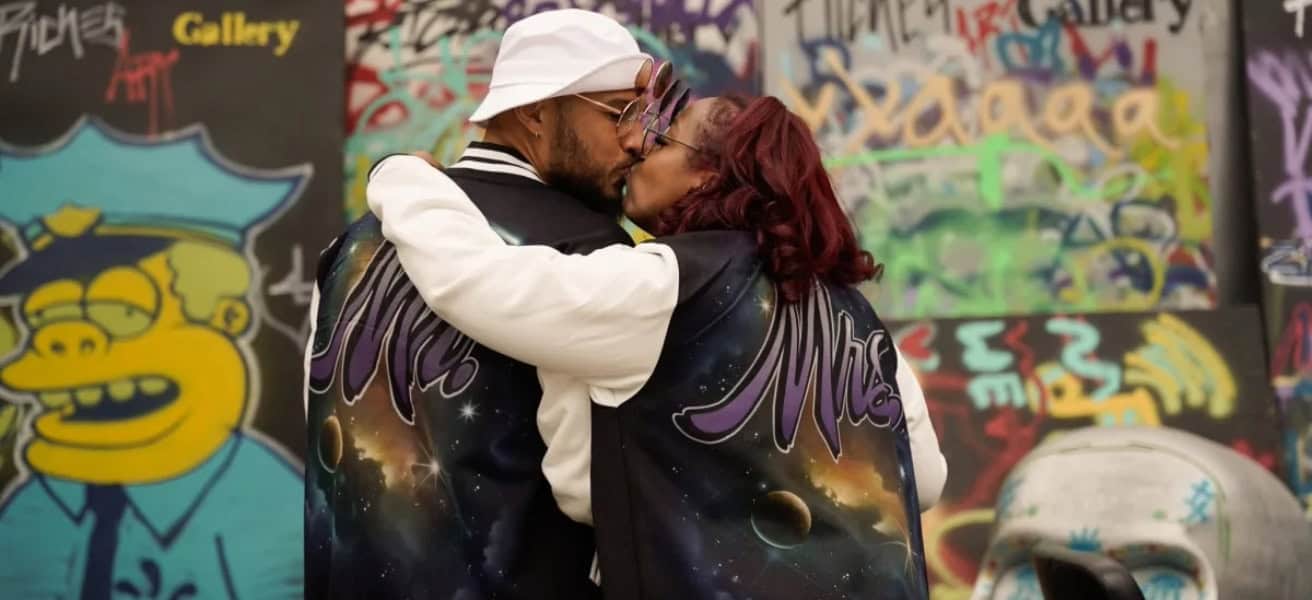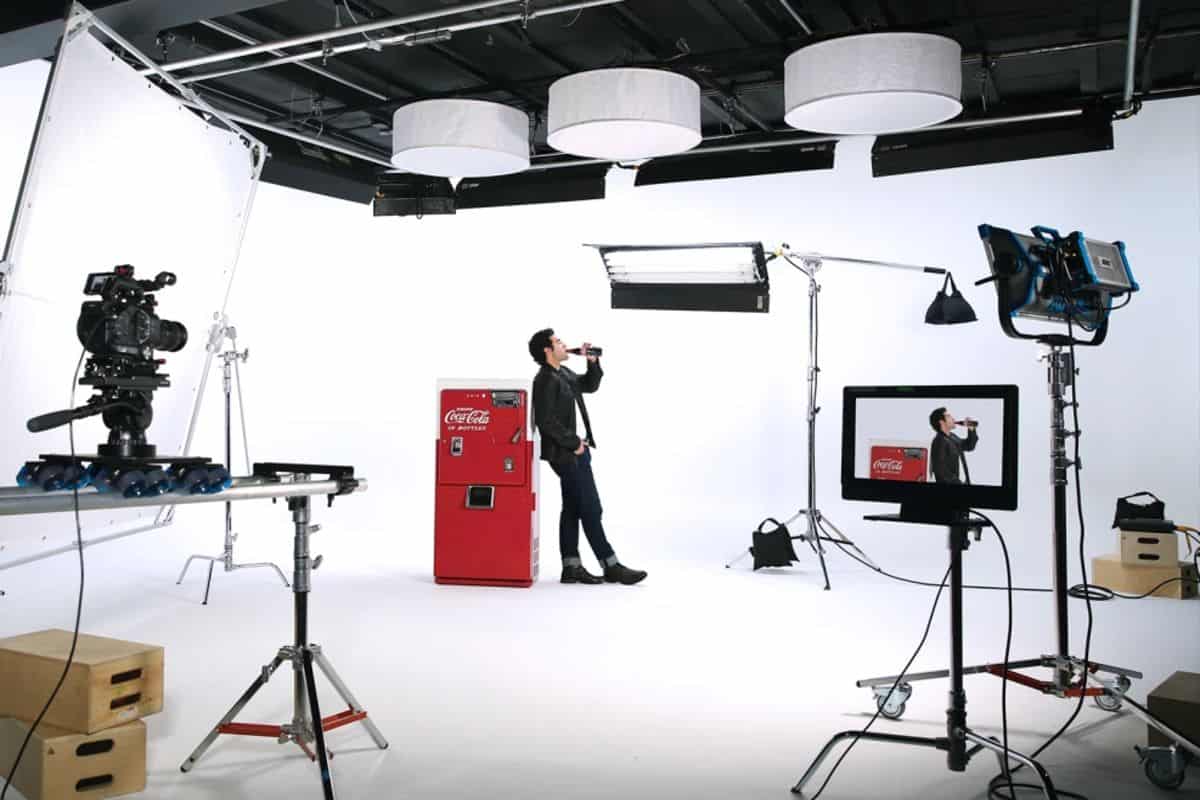
Source: Peerspace
There comes a time in every photographer’s professional journey when they’re ready to shoot in a studio. Maybe you want to take your portraits to the next level or expand your business into product photography. In either case, you’ll naturally wonder how to set up a photography studio.
While most cities have fully equipped, large spaces available to rent — something Peerspace can help you find — it can often be more convenient to have your own dedicated studio, especially when you need to spend time learning the ropes.
And did you know that investing time and money in your photo studio can actually help you make money down the road? It’s true! Create the professional photography studio of your dreams and list it here on Peerspace. Other professionals will rent it by the hour and create their own magnificent content. It’s an investment you may find well worth the effort!
But, baby steps! Let’s get back to the equipment you need to set up your photography studio.
How to set up a photography studio
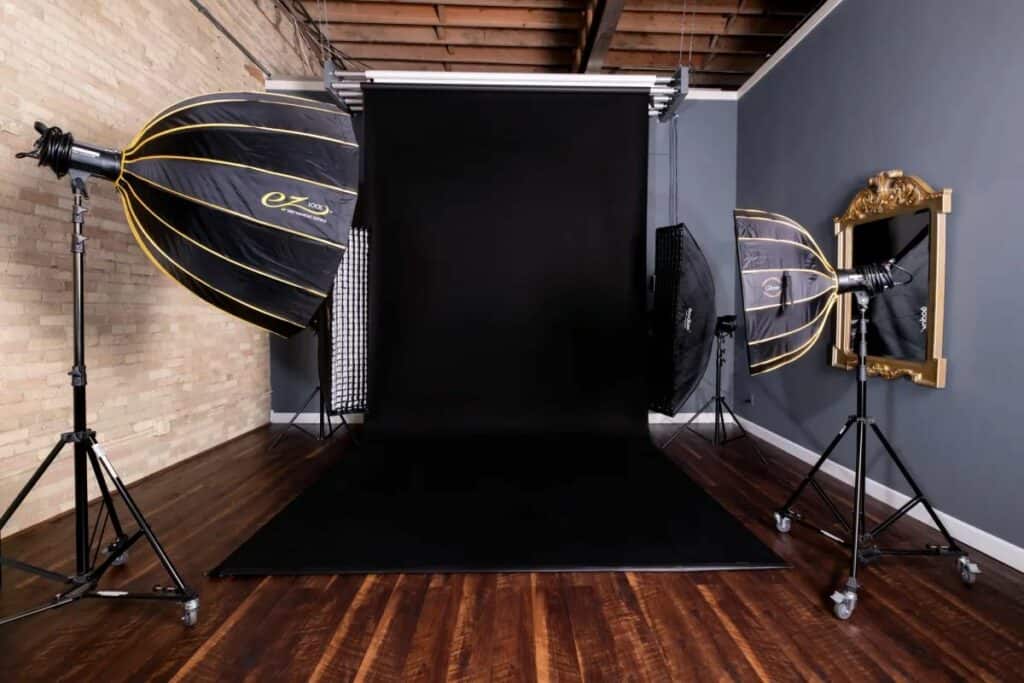
Your first studio space is almost always a spare room in your home or an emptied-out garage. Ideally, you’ll be able to keep your equipment set up, but if you’ll need to break it down between shoots to use the space for something else, know that going in so you purchase the best gear.
This works fine, but there are several considerations to keep in mind.
As we mentioned, Peerspace offers you the use of fully-equipped studio spaces in which to work. We have thousands of professional-level studios in cities across the country and beyond, all of which are available to book by the hour.
The people who own these studios are local artists, like yourself, who see the value of listing their studio to other artists for several reasons.
We’ll explore that more in detail ahead! But for now, let’s get back to setting up a photography studio.
Consider the space
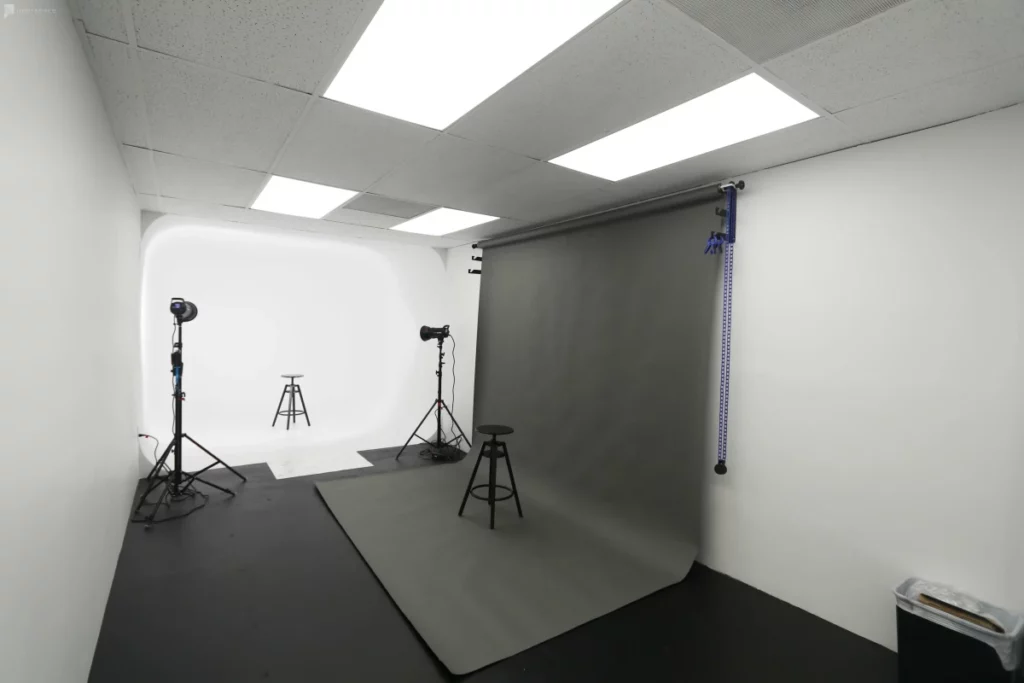
You have a spare bedroom or unused office in your house — great, this is where your studio preparations will begin.
Think about the number of windows in the space. If you want the option to work with natural light, you’ll need to be sure to set up your backdrop near one of them. But, if you want to eliminate outside light sources and shoot only with strobes or continuous lighting, you’ll need to invest in blackout curtains for all the windows.
Also, consider the color of the room. White walls are best — they’ll reflect light cleanly. Any color on the walls will affect the color of the light.
This room also needs to be large enough for both you and your subject, as well as your equipment. When thinking about how to set up a photography studio, keep in mind that equipment can quickly take up lots of space, so plan ahead.
Check out these 8 creative ways to earn money from your studio to make the most of your space!
What kind of lights do you need?
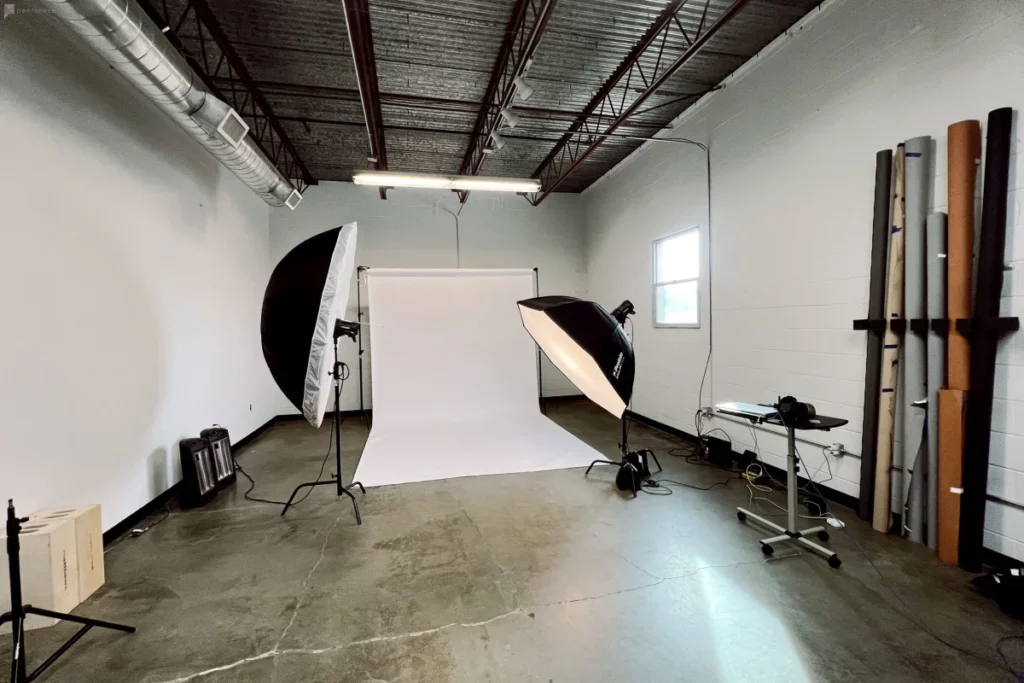
Natural light is nice to have access to and a perk for any studio. Yet, for the true studio experience, you’ll also need lighting you can have full control over.
The two main categories of studio lighting on the market are strobes and continuous. Continuous lights are easier to use, and what you see is exactly what you get when you’re setting up your shot. However, they don’t put out as much light as a strobe. They’re a good choice if you’re shooting product photography. The ideal choice for working with people will always be the strobe.
Strobes can get pretty expensive, but several companies have cheaper models that work well for beginners. With strobes, you’ll also need to consider light modifiers.
Modifiers fit around or over the strobe to change the strobe’s performance. A softbox, for example, diffuses the light over a large area and creates a very gentle transition from highlight to shadow. This is a classic look that is great for portraits.
Modifiers like barn doors or a beauty dish diffuse the light less gently and can make your portraits much more striking. Over time, you’ll want to have several modifier options for your lights, as well as experiment with combinations for the best effect.
Which lenses work best?
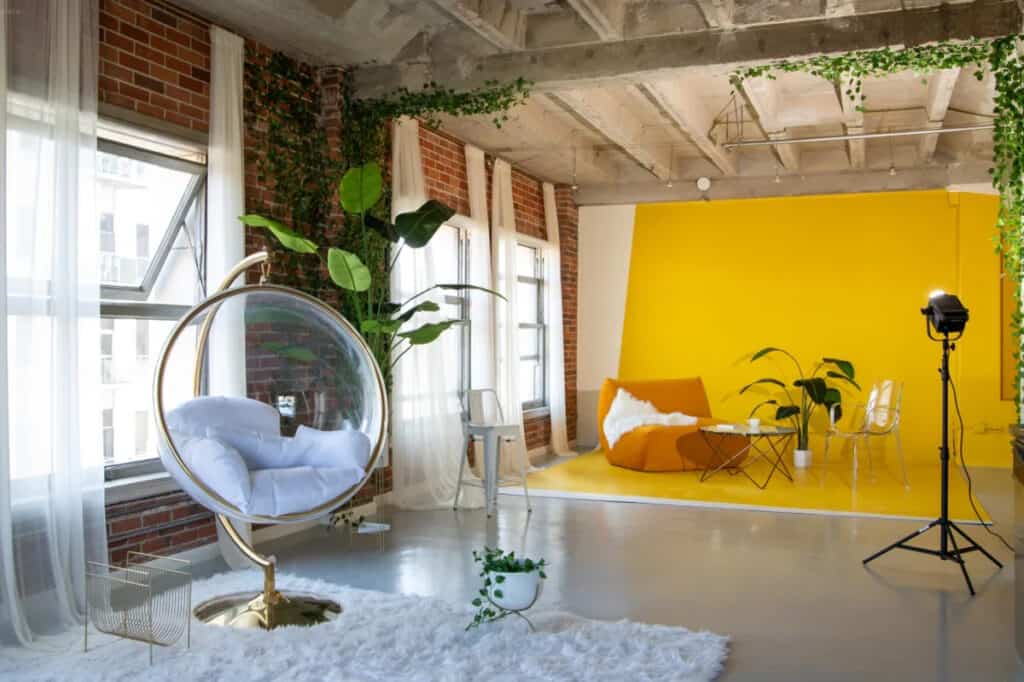
Another consideration when considering how to set up a photography studio is what lens you’ll be using on your camera. Don’t invest in a studio setup if you don’t have good glass to use in the space.
For instance, portraits are typically shot on lenses in the 85mm range. However, if you don’t have enough space for a longer focal length like that, you may have to use something closer to 50mm.
The ideal portrait lens has a wide f-stop, giving you a great separation between your subject and background. Lenses as fast as f/1.4 are pricey, but if you’re willing to lose a little light, a maximum aperture of f/1.8 should work fine and will be considerably more affordable.
If you’re working with products, the last thing you should be worried about is bokeh, as you’ll likely be shooting in the f/8 to f/10 range. Depending on the size of the product, you may need a wider angle, so look at 35mm and 24mm lenses.
If you’re working with smaller products, like wristwatches or jewelry, you’ll need a macro lens. These allow you to take excellent shots of small-item details.
Learn more by discovering: what is an anamorphic lens?
Make your mark with backdrops
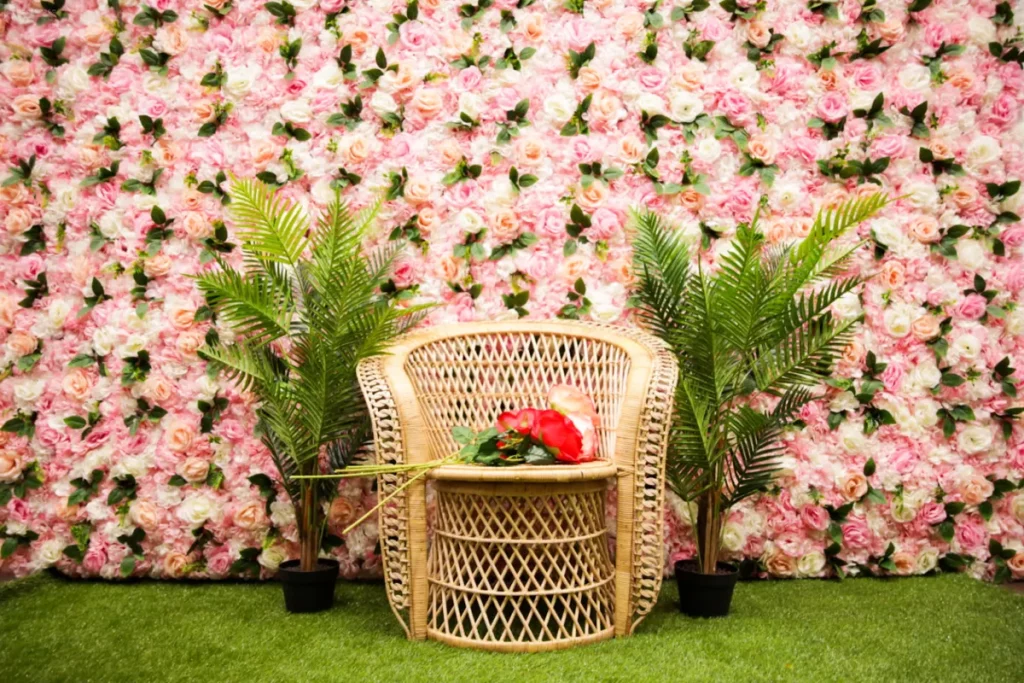
No studio is complete without a backdrop. Traditionally, you begin with a white backdrop. But various colors can add additional flavor to your images. Plus, many photographers use a textured backdrop to break up the monotony of monochromatic backgrounds.
You’ll want the largest cyc wall your space can handle. Cyclorama walls allow you to create an infinity illusion surrounding the model or product you’re shooting. They’re curved and make the background seem endless, making them an invaluable tool in the production business.
In addition to these, also consider fake brick or shrubbery walls. These add texture and color while giving your images a more creative flair. In fact, many studio owners install floral walls and grass walls to attract photographers, influencers, and other brands looking to add distinction to their people and product portraits.
For a first-time studio, however, begin with the white backdrop. It’s the most versatile and the easiest to work with when you’re still learning how to use your lights.
If you’re interested in shooting more dramatic portraits, then be sure to add a black backdrop as well. If you’re really in a pinch, a curtain panel or a blanket hung on the wall can serve as a backdrop.
Check out everything you need to know about collapsible backdrops here
Other equipment considerations
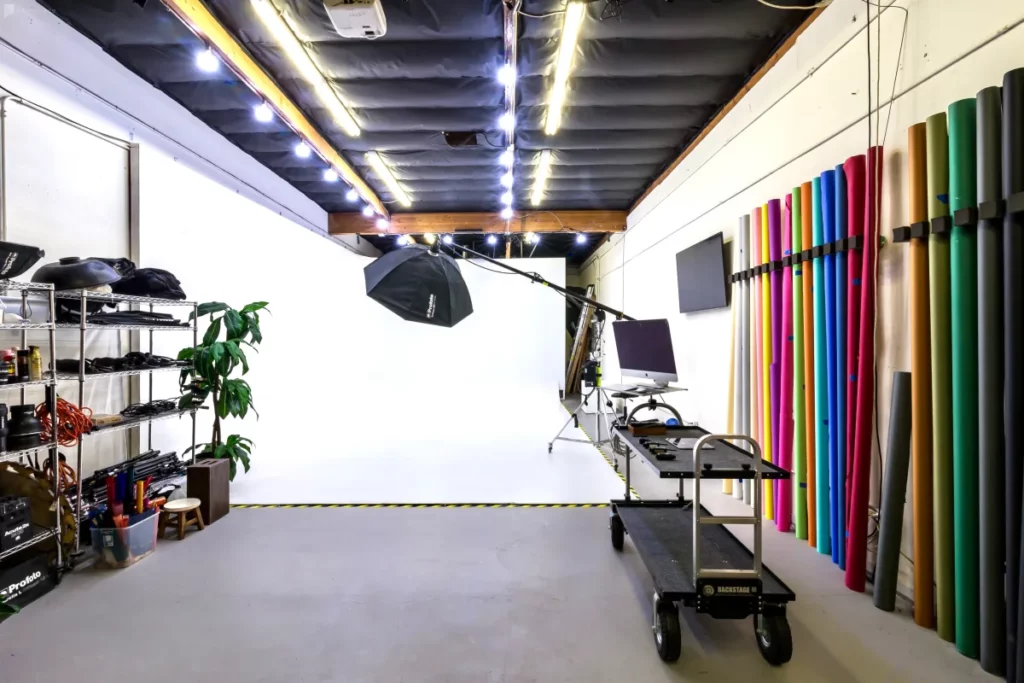
In addition to the lights, lenses, and backdrops, there are some other pieces of equipment that you’ll need. Remember that each light needs its own light stand. And the stand must be sufficient enough to hold the weight of the light. The weight of the light will also change once you introduce modifiers, so plan ahead and buy robust light stands.
It’s also a good idea to have an adequate tripod for your camera, especially if you’re shooting products. This ensures consistent angles across all your images. However, if you’re working with models, the tripod is less useful.
Additional equipment you need will depend on the studio you’re creating. For instance, many boudoir studios need unique props, like a bed. Some boudoir studio owners even have a client closest on-site.
Lifestyle studios will likely have plenty of access to natural light as lots of bohemian decor and props. This is because these are some of the most attractive options when it comes to shoots pertaining to families, weddings, and brands.
Consider renting it out on Peerspace to earn some extra money
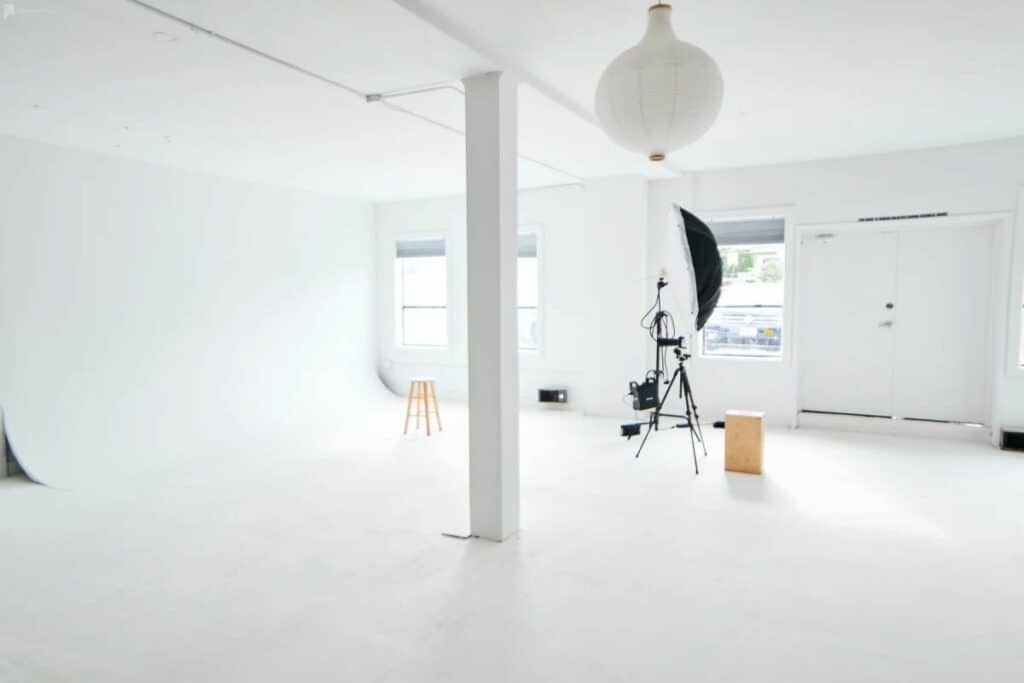
Once you’ve decided how you want to build your photography studio, and what equipment you want to outfit it with, you might consider renting it out on a platform like Peerspace. Why not earn a side income on the studio you built using your own time, money, and passion?
In doing so, you can vet your guests yourself and use your new space to earn money. It can go a long way to covering equipment and utility costs, as well as connecting with you other like-minded individuals. When you’re not using it, other creatives can.
Check out how other studio owners show off their spaces on Peerspace. This can give you a better idea of how to make your studio stand out.
On Peerspace, you’ll encounter everything from:
- Classic portrait studios with traditional backdrops and lighting
- Multi-set studios packed with props and personality
- Retro-themed studios that play with color and patterns
- Industrial studios with high ceilings, exposed brick, and lots of space
- Flex studios that offer clients indoor and outdoor shooting space
- Boudoir studios that provide beds and other modular furnishings
- Commercial-specific studios with lighting grids and makeup stations
Let Peerspace listings inspire your own studio space and its listing page to-be. You can read reviews left by Peerspace users to know what most people like and do not like in a given space. Compare your studio with similar spaces in your area to help you set your hourly rate, too.
You can learn a lot by using Peerspace as a research tool. When you and your studio are ready, you can list it on the platform, with all the features and rules you like. And best of all, you can get started for free.
Need more information? Check out your must-have equipment to set up a photo studio
How to set up a photography studio: conclusion
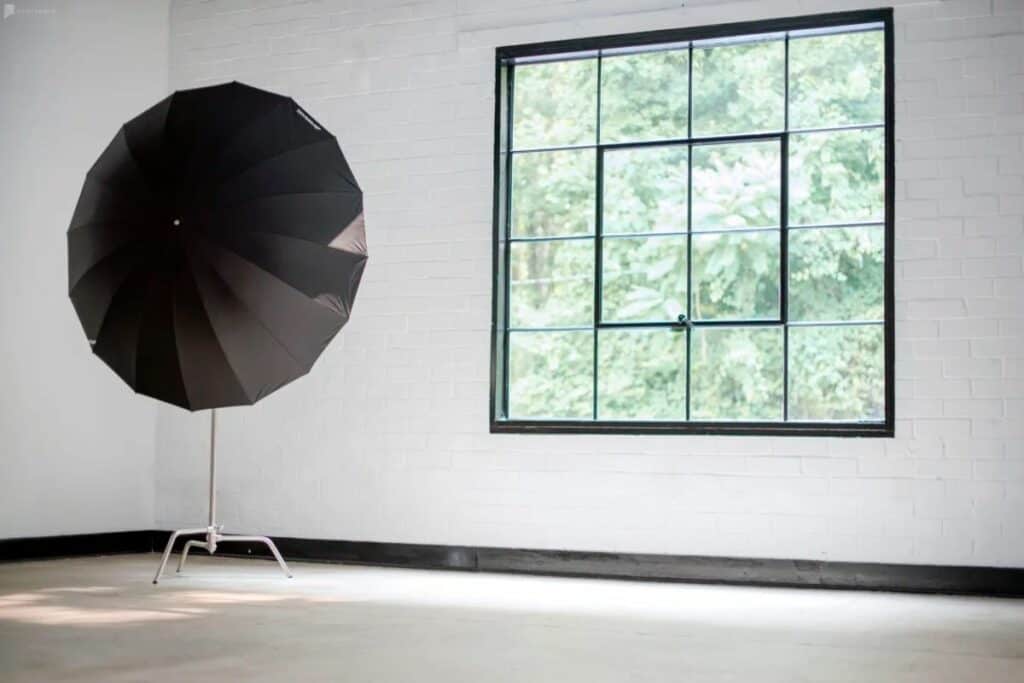
Hopefully, these thoughts give you some ideas on how to set up a photography studio. It can be an intimidating process at first, but adequate planning makes it simple.
The key to any successful studio setup will reside in your ability to control the light, keeping it consistent from image to image. And, while a studio can quickly become a major financial investment, you don’t have to shell out large amounts of money to get going.
A pair of $100 strobes and a simple paper backdrop will go a long way toward improving the quality of your images while letting you learn what works for you and what doesn’t. Most photographers don’t have a practical need for the absolute most powerful strobes or every light modifier on the market all at once.
Start small and master what you have before you expand, and you’ll be well on your way to making great work in your own studio.
Find unique photo studios on Peerspace
Get together somewhere better
Book thousands of unique spaces directly from local hosts.
Explore SpacesShare your space and start earning
Join thousands of hosts renting their space for meetings, events, and photo shoots.
List Your Space

